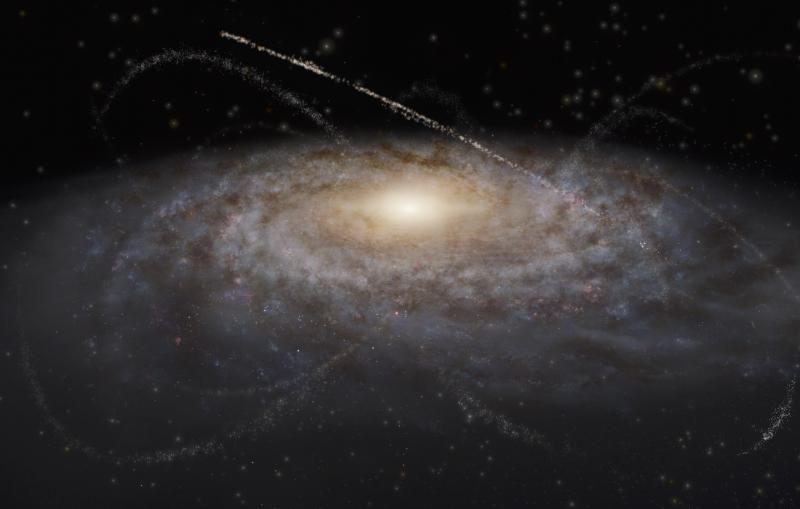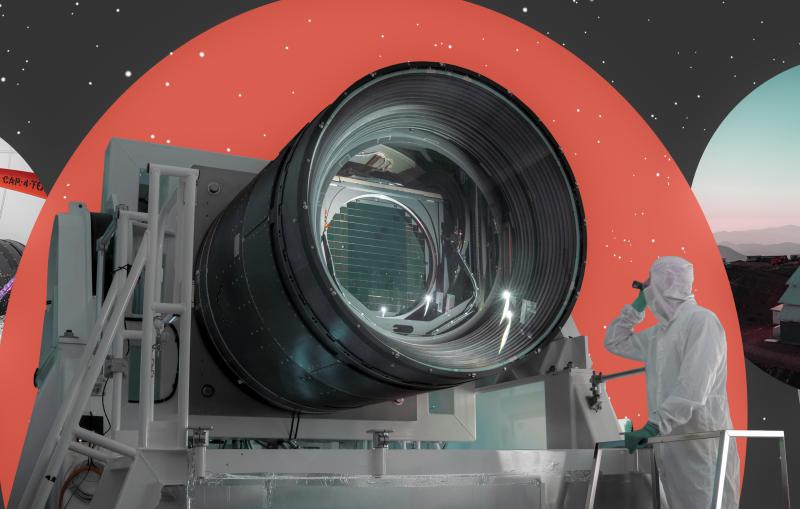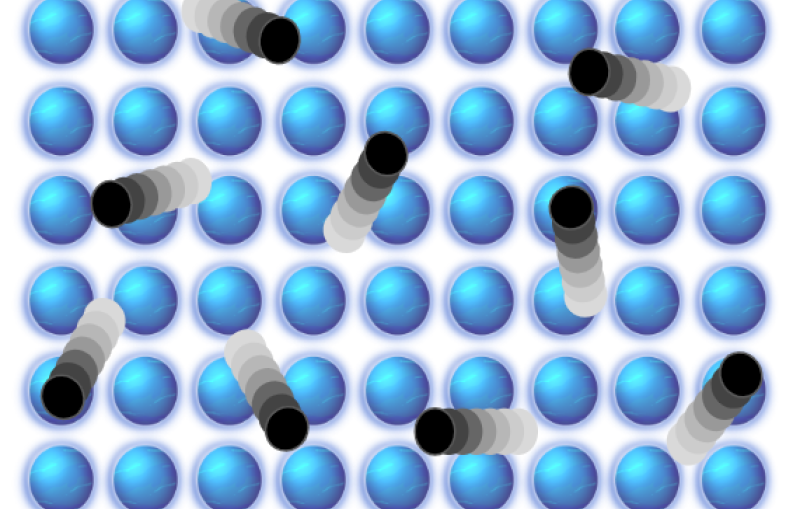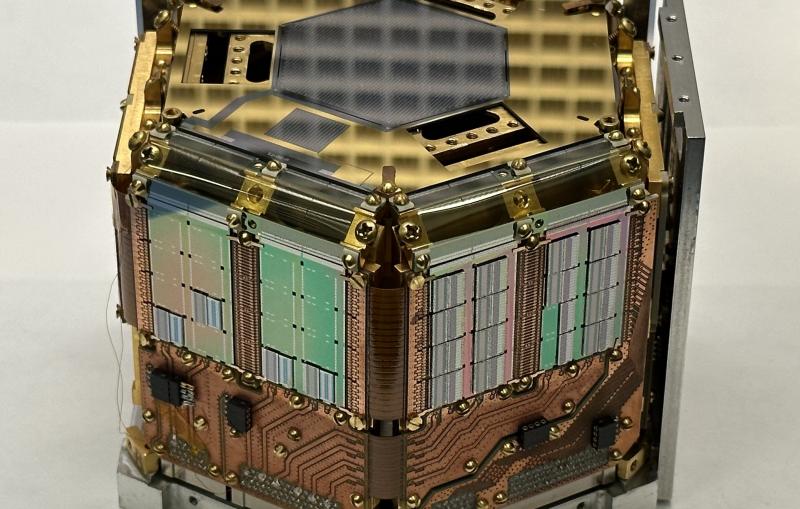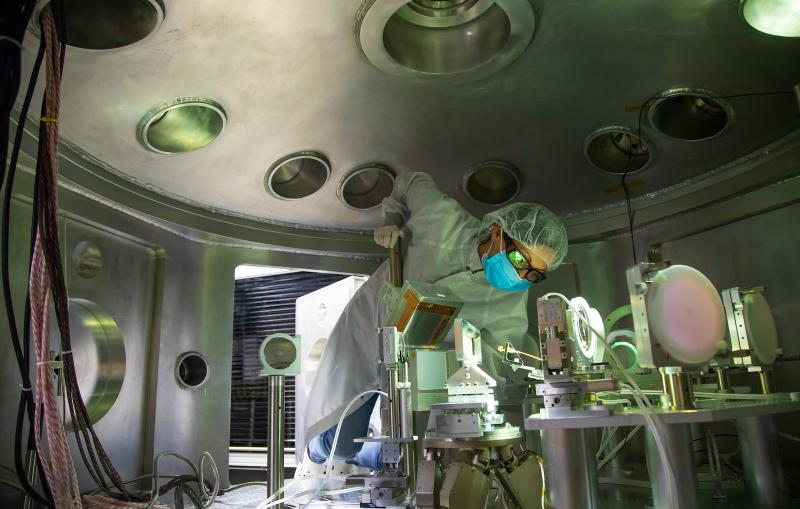A day in the life of a dark matter data wrangler
Maria Elena Monzani prepares an international team to search for clues to one of the biggest scientific mysteries.
By Angela Anderson
As she grew up in the small town of San Pellegrino in the Italian Alps, three things conspired to make Maria Elena Monzani a physicist: a fascination for outer space, a Nobel Prize and a nuclear disaster.
“I wanted to study space since I was 3 or 4 years old. I actually remember learning the word ‘physics’ when I was 5 and thinking, ‘Oh, that’s it!’” she recalls. “Then in the mid-'80s two major events occurred in Italy: Carlo Rubbia won the Nobel in physics and the Chernobyl disaster caused children to be indoors for months – it was a big deal.”
Around that time, she remembers poring over a children’s book that compared the solar system with its orbiting planets and the atom with its whirling electrons. “I thought, ‘This is amazing! The smallest thing I know and the largest thing I know have the same structure.’ For me, that was that.’”
Monzani became the first in her family to go to college. She went on to get her PhD in neutrino physics from two European universities and started work at the Department of Energy’s SLAC National Accelerator Laboratory in 2007.
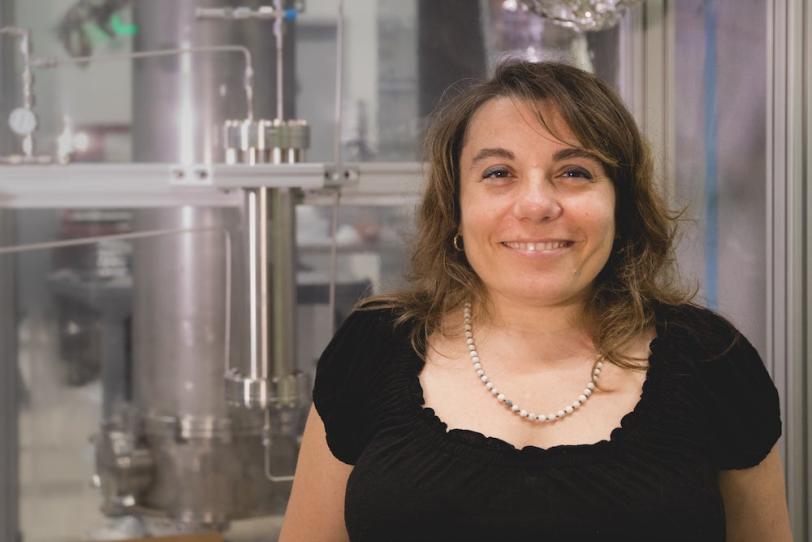
Today, she spends most of her work day preparing scientists around the globe to analyze data from a future experiment designed to detect signals of elusive dark matter particles – the stuff you don’t see when you look into the night sky, although it makes up about 85% of all matter in the universe.
As deputy operations manager for software and computing on the LUX-ZEPLIN (LZ) experiment, Monzani starts several days a week on the phone with the European contingent of a large international science collaboration that includes some 150 physicists and several engineers.
Their mission is the equivalent of looking for a needle in a haystack, she says. The needle is a handful of weakly interacting massive particles, or WIMPs, theorized candidates for the fundamental components of dark matter. The haystack is 3 petabytes of data that will be collected over three years in a liquid xenon detector 1 mile underground.
This is the fifth generation in a series of experiments of the same style, but the new detector will be hundreds of times more sensitive than the last. “If there were any more than a handful of WIMPs to be found in these types of experiments, we would have probably discovered them by now,” Monzani explains.
Finding those few WIMPs in a pile of data will rely on powerful analysis software, the basis of which was written by the larger high-energy physics community for experiments involving particle collisions. Monzani’s team adds in all the elements that are specific to the LZ detector. Her job is to decide what software will be needed and how to write it and ready it for data taking. She also ensures that all the scientists, postdoctoral researchers and graduate students have the tools they need to analyze the data.
Her afternoons are busy with meetings and questions from grad students and postdocs, and then she settles in with her own computer to work on proposals and reports and write code.
It’s a giant challenge, but one that she has grown into over many years of following her passion for particle astrophysics and computing.
“At home, my father was always into computers. That was the 1970s, when the machines had less computing capacity than your Fitbit and took up a whole building,” she recalls. During an internship at the end of college, Monzani learned database programming.
She worked on the XENON10 experiment at Columbia University as a postdoc before joining SLAC to work on NASA’s Fermi Gamma-ray Space Telescope, for which the lab built the principal scientific instrument. This instrument, called the LAT, has recorded in 10 years about the same amount of data that LZ will produce over its planned lifespan of three years.
“It wasn’t obvious to me that I could have a career in academia,” Monzani says. “So computers were a fallback, but also a lot of fun. Today, it feels pretty powerful to have 100,000 jobs running in parallel on a supercomputer.”
One of the fun projects she’s been working on is a mock data challenge. “Before we started building the LZ detector, we actually designed a full simulation of three years of data in the software,” she says. “In a mock challenge, we give six months' worth of these simulated data to analyzers, who then have to figure out the detector effects, the most important backgrounds and signals.”
It takes five years to build the LZ experiment, so the mock challenges keep collaborators motivated and train them for the actual analysis down the road, she said. They are working on the third challenge, where they have planted extra signals known as “salt” that help reduce the bias in data analysis.
When she’s not at work, Monzani shares her passion for science by giving talks to middle school children and her church community.
“People always have a lot of questions,” she says. “No one thinks that space is boring – people have been studying the stars for ten thousand years.”
And even though she now understands the basic forces and equations that explain the things that fascinated her has a child, she still comes to work each day with a sense of wonder.
“The fact that we as humans have the ability to grasp that symmetry – we can write an equation that describes the solar system, the galaxy, or the atom – that to me is mind blowing,” she says.
She is hopeful that the efforts of the LZ collaboration today will pay off with a few WIMPs down the road. Discovering dark matter would be incredibly exciting, she says: “But even if we don’t find them, the experiment will help inform us about these hypothetical particles and the theory behind them – even if it’s not as fun to share with the world.”
Contact
For questions or comments, contact the SLAC Office of Communications at communications@slac.stanford.edu.
SLAC is a vibrant multiprogram laboratory that explores how the universe works at the biggest, smallest and fastest scales and invents powerful tools used by scientists around the globe. With research spanning particle physics, astrophysics and cosmology, materials, chemistry, bio and energy sciences and scientific computing, we help solve real-world problems and advance the interests of the nation.
SLAC is operated by Stanford University for the U.S. Department of Energy’s Office of Science. The Office of Science is the single largest supporter of basic research in the physical sciences in the United States, and is working to address some of the most pressing challenges of our time. For more information, please visit science.energy.gov.
